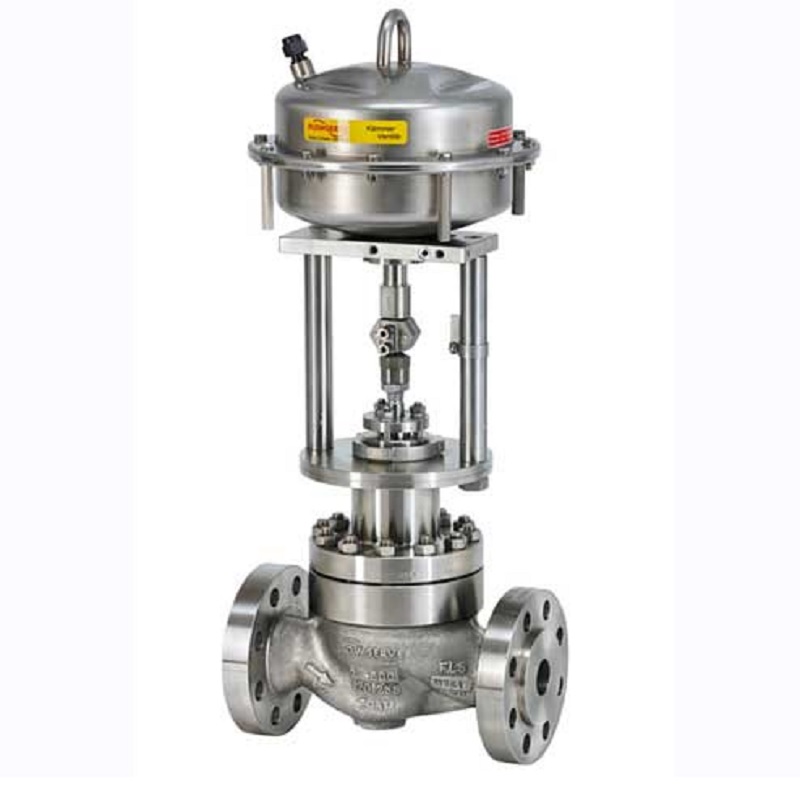Innovative Control Valves: Enhancing Precision and Dependability
Innovative Control Valves: Enhancing Precision and Dependability
Blog Article
Achieve Seamless Combination and Control With Top Quality Building Automation Controls
In the realm of contemporary structure management, the value of quality structure automation controls can not be overemphasized. Accepting high quality building automation controls is not simply an issue of comfort yet a strategic critical for organizations aiming to optimize their facilities' performance and sustainability.

Evolution of Building Automation Controls
Throughout the previous few decades, the advancement of constructing automation controls has actually substantially transformed the way buildings are handled and operated. At first, building automation systems mostly focused on standard features such as regulating home heating, air, and ventilation conditioning (HVAC) systems. As modern technology progressed, these controls have become more innovative, enabling for a bigger array of structure systems to be integrated and handled centrally.
The advancement of developing automation controls has actually seen a shift towards even more intelligent systems that can adapt to transforming conditions in real-time. This versatility is vital for enhancing power efficiency and ensuring occupant comfort. In addition, contemporary building automation controls currently offer features such as predictive upkeep, remote monitoring, and data analytics, enabling facility supervisors to make data-driven choices to improve building efficiency.

Advantages of Top Quality Assimilation
The development in structure automation controls in the direction of even more intelligent systems has actually highlighted the substantial benefits of high quality combination in enhancing structure operations and boosting total performance. Quality assimilation of constructing automation controls supplies a number of vital benefits. First of all, it causes boosted energy effectiveness by allowing various systems to interact flawlessly, making certain optimum efficiency and minimizing power waste. High quality combination boosts resident convenience and efficiency by enabling customized control over ecological setups like air, lighting, and temperature quality. This customization can cause a much more comfortable and conducive working or living setting. Furthermore, top quality assimilation streamlines maintenance and troubleshooting processes, as all systems are adjoined and can be kept an eye on and regulated from a central user interface. This central control also offers better visibility and insights into building efficiency, making it possible for positive maintenance and optimization techniques. In general, the advantages of top quality assimilation in building automation controls are indisputable, using raised effectiveness, convenience, and functional effectiveness.
Enhanced Individual Experience and Accessibility
Enhancing individual communication with building automation regulates with user-friendly design and improved availability boosts the general experience for occupants and center managers alike. By concentrating on customer experience, building automation systems can come to be much more straightforward and effective. User-friendly interfaces, clear navigating, and personalized settings equip customers to interact with the click to read controls conveniently and properly.
Availability features play an essential function in making certain that all individuals, including those with specials needs, can make use of the building automation manages effortlessly. Including features such as voice commands, tactile buttons, and color-contrasted display screens can enhance access and make the controls more comprehensive.
Additionally, boosted customer experience causes greater customer complete satisfaction, raised efficiency, and much better decision-making. Passengers can readjust ecological settings according to their preferences, while facility managers can successfully keep an eye on and handle building systems - control valves. On the whole, focusing on customer experience and ease of access in building automation controls adds to a more productive and seamless structure setting for all stakeholders included
Lasting Practices Through Automation

Moreover, automation can help with the combination of eco-friendly energy sources such as solar panels or wind turbines into building procedures. Via automation, buildings can straighten with modern-day sustainability goals and contribute to a greener future.
Future Trends in Structure Control Solution
One noticeable pattern shaping the future of structure control systems is the increased combination of Artificial Intelligence (AI) and machine discovering. Furthermore, the Net of Points (IoT) is changing building control systems by linking sensors and devices to streamline procedures and enhance efficiency.
Another key fad is the focus on cybersecurity steps to secure versus potential risks to building automation systems. As buildings become a lot more interconnected, guaranteeing robust cybersecurity methods will certainly be important to safeguard delicate information and avoid unapproved access.
In addition, the change my sources in the direction of cloud-based platforms is acquiring momentum, enabling systematized control and remote access to structure systems. This promotes simpler monitoring, upkeep, and updates, enhancing the total performance and flexibility of structure control systems. As technology continues to breakthrough, these trends are anticipated to form the future landscape of building automation controls, driving innovation and sustainability in the constructed setting.
Verdict
Future fads in building control systems are likely to focus on further boosting automation capabilities for boosted energy effectiveness and general performance. It is important for building owners and operators to prioritize the fostering of top quality structure automation regulates to enhance structure operations and achieve lasting sustainability objectives.
In the realm of contemporary read here structure management, the relevance of high quality structure automation controls can not be overstated. Overall, the development of structure automation regulates proceeds to drive innovation in the structure administration industry, supplying brand-new opportunities for creating smarter and more lasting buildings.
The development in structure automation manages towards more intelligent systems has highlighted the substantial advantages of high quality assimilation in enhancing structure operations and boosting overall performance. Overall, focusing on customer experience and accessibility in building automation controls adds to a more productive and seamless building setting for all stakeholders involved.
It is crucial for building proprietors and drivers to prioritize the adoption of top quality structure automation manages to enhance building procedures and attain lasting sustainability goals. - control valves
Report this page